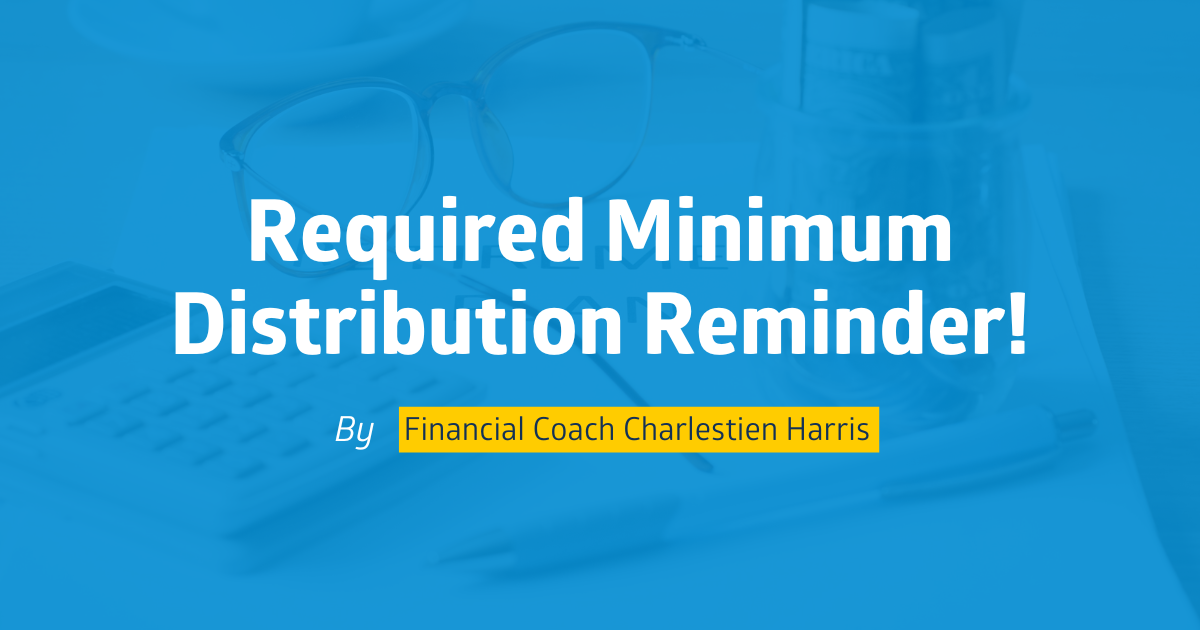By: Charlestien Harris
Heads up to those of you that are at least 70 ½ and above – it is nearing the end of the year, and you don’t want to forget to take your Required Minimum Distribution (RMD) that is required by the Internal Revenue Service.
Required minimum distributions (RMDs) are the minimum amounts you must withdraw from your retirement accounts annually. You generally must commence withdrawals from your traditional IRA, SEP IRA, SIMPLE IRA, and retirement plan accounts upon reaching the age of 70 ½ if you were born in 1949 or earlier. The following chart outlines when you should begin your RMD withdrawals:
Year born RMD Age
June 30, 1949 or earlier 70.5
July 1, 1949 to Dec. 31, 1950 72
1951 – 1958 73
1959 73 or 75 (Reference SECURE Act 2.0 )
1960 or later 75
Starting in 2023, the SECURE 2.0 Act raised the age for mandatory RMDs to 73. If you turn 72 in 2023, your first RMD must be taken by April 1, 2025, for the year 2024. Notice 2023-23 allows financial institutions to inform IRA owners by April 28, 2023, if no RMD is necessary for 2023. If you turn 73 in 2023, you were 72 in 2022, and you were subject to the age 72 RMD rule effective in 2022. If you turned 72 in 2022, your initial RMD was due by April 1, 2023, based on your account balance on December 31, 2021, and your second RMD must be taken by December 31, 2023, based on your account balance on December 31, 2022.
Remember, this distribution is taxable income. Ensure that when you withdraw the funds, you set aside a portion for taxes. If you’re uncertain about your RMD for the year or how much to withhold for taxes, consider reaching out to the IRS or visiting their website at www.irs.gov/retirement-plans/retirement-plan-and-ira-required-minimum-distributions-faqs for more information. You can withdraw more than the required minimum amount. Your withdrawals are reported as taxable income on the IRS 1099-R form, except for any portion that was already taxed or can be received tax-free (such as qualified distributions from designated Roth accounts).
If you are currently enrolled in an employer retirement plan (e.g., 401(k) or profit-sharing plan), you can postpone your RMDs until the year you retire, unless you own at least 5% of the business sponsoring the plan. Roth IRAs do not necessitate withdrawals until after the owner’s death. Designated Roth accounts in a 401(k) or 403(b) plan are subject to the RMD rules for 2022 and 2023. However, from 2024 onwards, RMDs are no longer obligatory from designated Roth accounts. You still need to take RMDs from designated Roth accounts for 2023, including those with a required beginning date of April 1, 2024. For further clarification or additional information, consult a financial advisor, a certified accountant (CPA), or a certified financial planner (CFP).
The average American spends approximately 20 years in retirement. Financial security during retirement doesn’t just happen; it requires meticulous planning, dedication, and, of course, financial resources. Statistics have shown that only half of Americans have calculated how much they need to save for retirement. In 2020, over a quarter of private industry workers with access to a defined contribution plan (such as a 401(k) plan) did not participate. Saving for retirement is a habit we can all benefit from.
For more information on this and other financial topics, feel free to email me at Charlestien.Harris@banksouthern.com or call me at 662-624-5776.
Until next week – stay financially fit!
